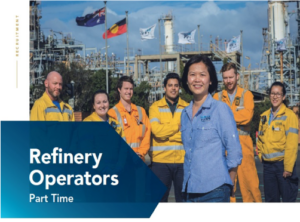The National 2017 Group
Leaders must address the public presence or ‘face’ of their organisation as part of deeper efforts to build a gender-balanced and inclusive presence. Male-dominated cultures can be perpetuated and reinforced through the use of outdated stereotypes, language and imagery, unjustified gender imbalances, gendered design, infrastructure as well as equipment.
The discipline of regularly testing the messages you project draws the eye to a range of improvement opportunities. These can range from small to significant. Taken together, there is considerable organisational, community and commercial upside to capitalise on.
Have you considered gender-balance in language, imagery and tone in your brand? Are you developing physical environments with the needs and aspirations of men and women in mind? Are you incorporating the needs of all genders into design, infrastructure and equipment?
Reviews of marketing material by some organisations in the MCC National Est. 2017 Group revealed that the imagery and language used in advertising and recruitment materials were not diverse or inclusive of women. Equally site audits, conducted by some organisations, found that equipment is often designed for men and can have inadequate facilities for women.
Hanson Case Study: Facilities upgrade
What we heard: A site audit conducted by Hanson’s Diversity and Inclusion Steering Committee found that many sites had inadequate facilities for female employees, contractors and visitors.
Action taken: Hanson made improving the facilities at many of its sites a priority. Management endorsed a nationwide facilities upgrade as part of their commitment to creating an environment that encourages and supports diversity. Toilets were relabelled, lockable doors and sanitary bins were installed, urinals were removed from unisex toilets and cleaning plans were actioned. At some sites brand new women’s toilets and showers were installed.
Impact: Sometimes the simplest changes can have the greatest impacts. The amenities upgrade was well received by all Hanson employees.
Viva Energy Case Study: Gender Balanced recruitment campaign
 What we heard: Recruitment advertisements for refinery field operator roles were not attracting enough women applicants.
What we heard: Recruitment advertisements for refinery field operator roles were not attracting enough women applicants.
Action taken: Viva Energy redesigned its recruitment advertisements to include more diverse imagery. They also used language that was more inclusive of women. Over the course of a few years from 2016 to 2019, Viva Energy ran the recruitment campaign several times. Click here to see examples of their previous recruitment communications compared to their more progressive recruitment communications.
Impact: In both 2018 and 2019 Viva Energy achieved gender balanced recruitment (42.0% and 46.3% respectively).
Viva Energy has also seen a significant increase in female applicants and recruitment of women into operator roles. In 2019, Viva Energy recruited fourteen female part-time operators. These operators are having a positive impact on the culture of Viva Energy, bringing different thinking and questioning long-held assumptions, resulting in business improvements.
Further Information
Creating environments where women from all backgrounds feel welcomed, personally engaged and valued is essential to achieving gender equality. We invite you to consider auditing the ‘public face’ of your organisation.
See tips, lesson learned and further examples of high impact actions in the Building a gender-balanced and inclusive presence – Test the messages you project resource. This resource is available for leaders to adopt or adapt for use in their organisation.
